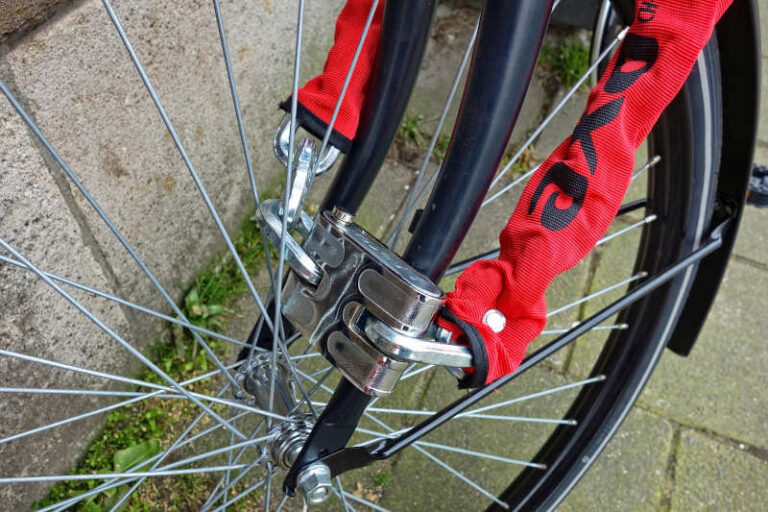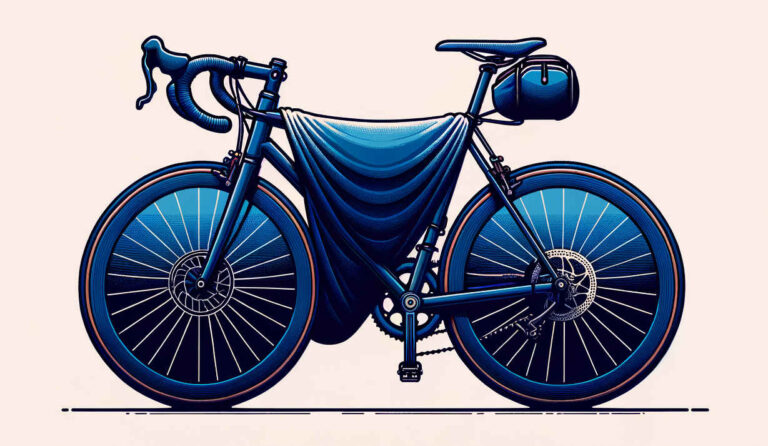Should I Put Suspension on My Fat Bike?

Table of Contents
Fat bikes were originally designed for sand and snow. Their wider tires with lower pressure gives amazing traction under those conditions. The ‘fat’ tires also absorb bumps better than regular bike tires. Many riders have expanded beyond beaches and winter conditions and fat bikes have gained popularity for their versatility and ability to handle a variety of terrains.
But when it comes to adding suspension to a fat tire bike, opinions can be divided. Several factors need to be considered to decide whether it’s right for you.
Wheel Weight
Fat bikes already weigh more than regular mountain bikes because of the larger rims and tires. The increased surface contact from the fatter, low pressure tires also increases rolling resistance considerably. So a big question is…do you really want to put more weight on your fat bike? Is it worth it? Let’s look at some weights of each.
WEIGHT DIFFERENCES BETWEEN A REGULAR MTB WHEEL AND A FAT BIKE WHEEL
Let’s look at some typical ranges for both types:
Fat Bike:
- Rim: 2.6 to 3.5 lbs (1.2 to 1.6 kg)
- Tire: 3.3 to 5.5 lbs (1.5 to 2.5 kg)
Regular Mountain Bike:
- Rim: 1.5 to 2.2 lbs (0.7 to 1.0 kg)
- Tire: 1.5 to 2.6 (0.7 to 1.2 kg)
Add it up:
- Fat Bike Wheel Total: 5.8 to 9 lbs (2.7 to 4.1 kg)
- Regular MTB Wheel Total: 3 to 4.8 lbs (1.4 to 2.2 kg)
So you’re looking at up to TWICE as heavy for each wheel on a fat bike.
Front Suspension Weight
Front suspension forks for fat-tire bikes are designed to handle the unique demands of fat biking, including larger tire clearance and the ability to perform in varied and often extreme conditions.
When adding front suspension, forks for fat-tire bikes typically fall within a weight range of 1.8 to 2.5 kg (approximately 4 to 5.5 pounds).
To shave some weight off you can opt for a lighter variety of fork. The exact weight of forks varies based on several factors:
- Air-Sprung Forks: These are generally lighter and can be at the lower end of the range, around 4 to 4.8 lbs (1.8 to 2.2 kg). They use air pressure to provide suspension, which allows for weight savings.
- Coil-Sprung Forks: These tend to be heavier, often in the 4.8 to 5.5 (2.2 to 2.5 kg) range, due to the metal coil used for suspension.
- Shorter Travel Forks (80-100mm): These can be lighter since they have fewer materials and less complexity.
- Longer Travel Forks (120-150mm): These are heavier due to increased structural components and mechanisms to accommodate the longer travel.
- Aluminum Forks: These are common and offer a good balance of weight, strength, and cost.
- Carbon Fiber Forks: These are lighter but tend to be more expensive and are less common in fat bike suspensions due to the rugged conditions fat bikes often encounter.
Lighter usually equates to more expensive, so if you have a lower budget for suspension, you’re destined to add more weight to your bike (ugh).
Suspension in the Winter
Weight isn’t the only factor. You need to consider your willingness to do some extra maintenance.
To keep your bike’s suspension running smoothly in the winter, you’ve got to give it some extra TLC. Cold temperatures, snow, ice, and slush put the pressure on your suspension system.
Think of your suspension fluids as the lifeblood—they need to stay fluid and not turn into goo. This is where winter-grade suspension oils come into play; they’re designed to keep things moving smoothly even when it’s freezing. Seals and wipers are like the bike’s winter coat, keeping moisture and muck out. High-quality, well-lubricated ones are essential to prevent corrosion and ice buildup. And having adjustable suspension components? It lets you tweak your setup for whatever winter throws at you.
The Importance of Cleaning
Regular maintenance is the unsung hero of winter riding. After each ride, it’s important to give your bike a good clean, especially the suspension forks and shocks, to get rid of dirt, ice, and road salt. These elements can lead to premature wear and corrosion if left unchecked.
Frequently check and lubricate the seals and wipers with winter-specific lubricants to keep them effective. Routine adjustments to your suspension settings, like tweaking the rebound and compression damping, will help you stay in control as the terrain and temperature change. Think of it as fine-tuning your gear for the perfect winter ride, keeping your bike comfortable and responsive all season long.
So is Suspension Beneficial on your Fat Bike?
Here are some other pros and cons to consider.
Pros:
- Enhanced Comfort: Suspension absorbs shocks and vibrations from rough terrain, providing a smoother and more comfortable ride.
- Improved Traction: Suspension helps the tires maintain better contact with the ground, increasing traction and grip, especially on uneven surfaces.
- Better Control: The suspension system allows for better control and stability, particularly on technical terrain or descending steep slopes.
- Reduced Fatigue: With less impact transferred to the rider, suspension can reduce fatigue during long rides, allowing for increased endurance.
Cons:
- As we’ve already talked about above, added weight and maintenance requirements as well as the cost are definite cons.
- Complexity: Suspension systems introduce additional complexity to the bike, increasing the likelihood of mechanical issues and requiring specialized knowledge for troubleshooting and repair.
- Limited Efficiency: On smooth terrain, suspension can absorb pedaling energy, leading to a loss of efficiency and potentially slower overall speeds compared to rigid bikes.
But considering the other factors we mentioned above, it’s always best to go straight to the horse’s mouth so-to-speak, to get the real skinny.
What do actual riders say?
To get a broad spectrum of opinions we analyzed a number of different forums on the topic which showed very mixed reviews, with some saying:
- the fat tires absorb enough of the bumps and that suspension isn’t needed
- they enjoy the jolt reducing benefits of suspension on rocky trails and are glad they have it
- they didn’t notice enough of a benefit and took it out to reduce the weight
- they suggest having a rigid carbon fork as an alternative because it absorbs bumps better than a regular fork and is much lighter than suspension
- suspension helps maintain control on very bumpy off road terrain, helping to keep the front tire on the ground
- suspension is vital when going fast on downhill trails
- front suspension is not necessary in snow
The picture being painted is that it depends a lot on what kind of riding you do and how much you want to avoid extra weight.
Personally speaking, as I’ve started to ride my non-suspension fat bike more aggressively on single track trails in the summer, I noticed the ‘sproingy’ tires bouncing me up a lot on bumps during fast downhill descents. I don’t have great control when this happens. I’d like to go faster but am uncomfortable as I feel out of control. I’m considering adding suspension for this reason. I’m sure I’ll also enjoy the more comfortable and better-controlled ride, but I’m not looking forward to the increased weight or the winter maintenance. We’ll see how it goes.
Happy riding!

by: Cory Willins
Cory is a dynamic and passionate content writer, specializing in sports-related topics. With over a decade of experience in the field, Cory has established… read more






